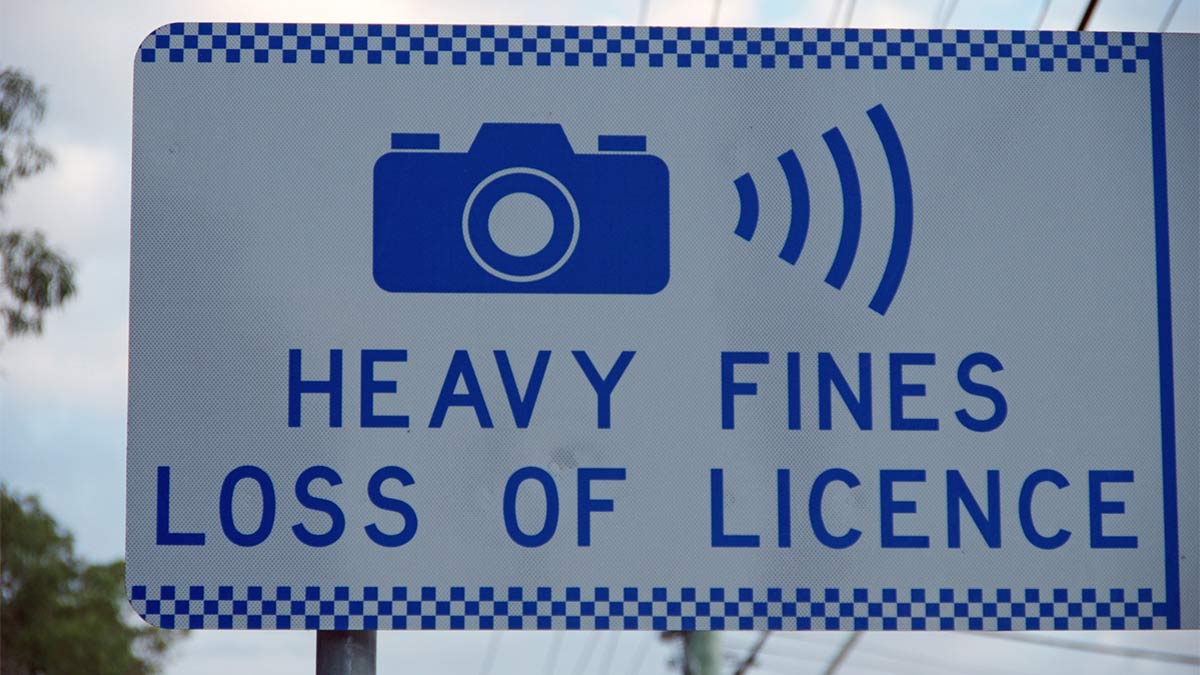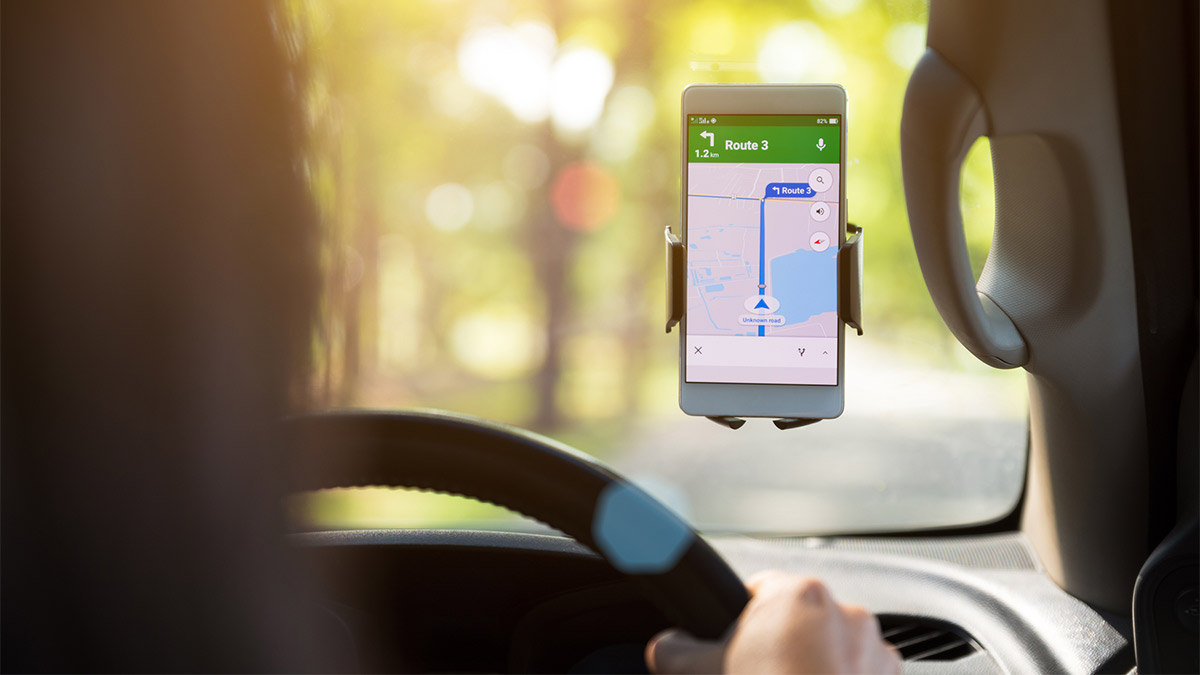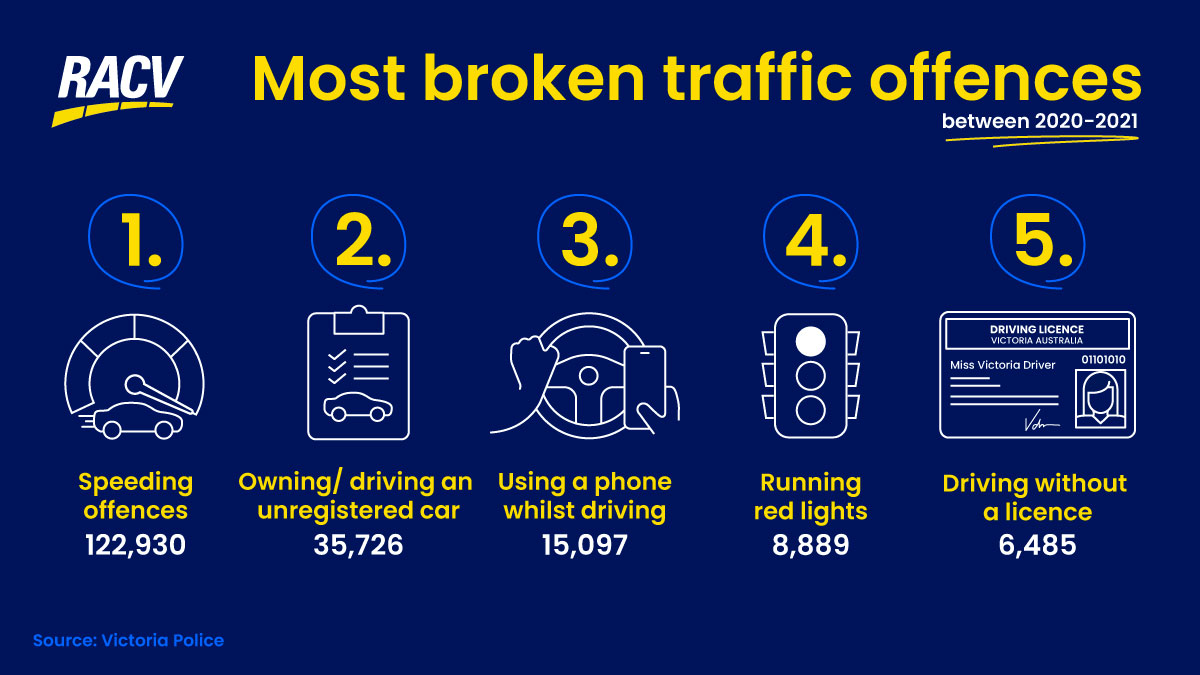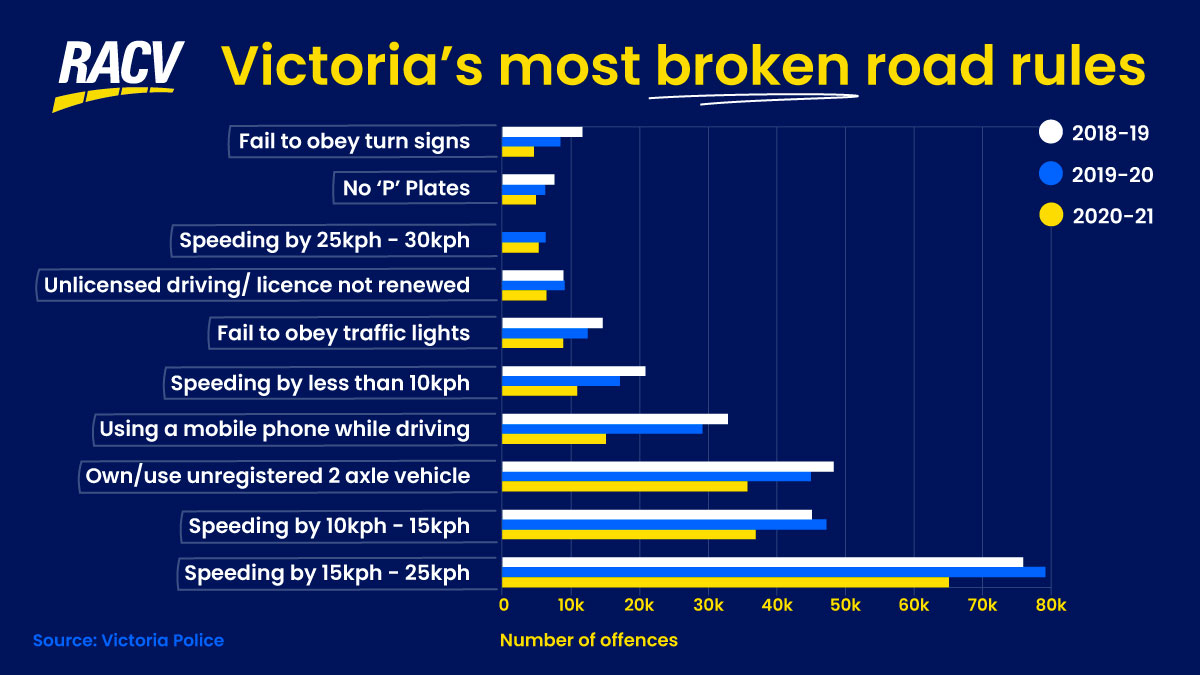Some common driving behaviours pose real dangers to all road users. This article explores some of the everyday actions that every driver should be aware of to help make Victoria’s roads safer.
The road rules most-often broken in Victoria

The latest Victoria Police data has revealed the most-broken traffic laws in Victoria, and the most-commonly broken is probably not the one you think.
Despite the constant reminders, rising fines, and increased driver education, road rules are broken every day on Victoria’s roads, and some more than others.
A range of road laws are broken hundreds of thousands of times over during any given year, and despite COVID-19 lockdowns resulting in fewer fines with less cars on the roads, the same five road laws are the most frequently broken year-on-year – meaning that though there may have been a shift in behaviours at home during COVID-19, behaviour on our roads remained the same.
From failing to obey signs and lights, to speeding and expired licences, we’ve crunched the numbers from Victoria Police and can reveal the most common traffic infringements in Victoria.
Victoria’s most-broken road rules
The most common traffic offence in Victoria is speeding, but not the type you might think.
Between July 1, 2018 and June 30, 2021, a total of 430,832 speeding fines were issued in Victoria according to Victoria Police, making it by far the most common traffic offence in the state three years running.
During that period, the most speeding offences were committed during the 2019-2020 financial year, with 155,223 speeding infringements recorded. This is despite the months of March to May being impacted by the COVID-19, ‘stay at home’ restrictions in place.
“RACV would have liked to see the reductions in traffic volumes and less people on the road translate into less trauma but unfortunately that wasn’t the case,” says Elvira Lazar, Policy Lead at RACV. “There’s always some risk behind the wheel and drivers should never become complacent.”
For comparison, 152,679 speeding offences were counted in the 2018-2019 financial year, while 122,930 were recorded in 2020-2021 (a period which included more ‘stay at home’ restrictions).
It would be fair to assume that most speeding offences were incidents where the vehicle was travelling less than 10kph over the limit. Concerningly, that assumption is wrong.
The most common traffic offence committed in Victoria is for speeding 15km to 25km over the legal speed limit.
Speeding infringements over 15km but under 25km recorded a total of 170, 231 incidents between the 2018 and 2021 financial years, and were the most common type of road rule broken every single year.
The second most common type of speeding offence recorded was for speeding between 10km and 15km over the limit (recorded 129,347 times).
And while you might think that a lot of people are caught speeding just a smidge over the signposted limit, only during the 2020-2021 financial year did speeding infringements less than 10km over the limit even make the top ten most common offences.
On the other end of the spectrum, speeding between 25km and 30km over the limit made the top ten most common offences twice between 2018 and 2021.
“Speed limits are set to make sure that the conditions of the road are safe for the people that use it. If a driver is speeding in a 60km/h zone or above, their risk of being in a crash doubles with every 5km/h over the limit because drivers will need more time to react and more time to brake the faster they travel,” says Lazar. “At 80km/h or above, even occupants in the safest cars will have significant injuries and potentially even lose their life in a crash. Speeding makes this impact even greater.

The majority of speeding fines issued to drivers is for going 15km to 25km over the legal speed limit. Photo: Getty
Victorians caught without rego, running red lights
After speeding, Victoria’s next most frequent traffic infringement is for registration and licensing offences, followed by safety procedures.
When separated into specifics, driving or owning an unregistered two-axle vehicle is the most frequently broken road rule in the state after speeding, with 129,077 infringements recorded in the 2018-2021 period.
Driving without a licence – and specifically without a renewed licence – also ranks highly on the ignominious list of common offences, with 24,476 drivers caught doing between 2018 and 2021.
You might want to reconsider the next time you think you can sneak through an amber light. Failing to obey traffic lights was an oft broken rule three years in a row, with 35,953 offences recorded.

If you hold a full license, you can use a mobile phone while driving but only under certain conditions. Photo: Getty
Put down that phone
While using a mobile phone while driving has been illegal in Victoria since 2009, it would seem that 13 years isn't long enough for some people to get the message.
Three years running, using a hand-held phone while driving has been one of the state’s most broken road rules, coming in third after speeding and registration offences.
In 2018-2019, 32,874 drivers were caught illegally using their phone. However, in 2019-2020 that number dropped slightly to 29,167, and then almost halved in 2020-2021 with 15,097 infringements recorded (keeping in mind 2020-2021 was beset by lockdowns and subsequently less driving overall).
New technology, however, is looking to address the issue of mobile phone use while driving. “Victoria will soon introduce fixed and mobile cameras to detect drivers on their phone or not wearing a seatbelt. What may seem like a momentary distraction can turn bad very quickly,” says Lazar. “A driver taking their eyes off the road for 2 seconds at 50km/h means they drive blind for almost 30 metres. At higher speeds, drivers miss even more.”
Fully licensed drivers in Victoria can legally use a mobile phone while driving if the phone is mounted to the vehicle and can be operated hands-free.
Even under these circumstances, the phone can only be used to make or receive a phone call (not to text or make a video call), to play audio or music, to use navigational functions, or to use an in-vehicle warning system. All other uses, even if the phone is correctly mounted, are prohibited.
Other road rules that were consistently broken between July 1, 2018 and June 30, 2021 include failing to obey a turn sign, and not displaying P Plates.
National Road Safety Week runs from May 15 to 22, 2022.




